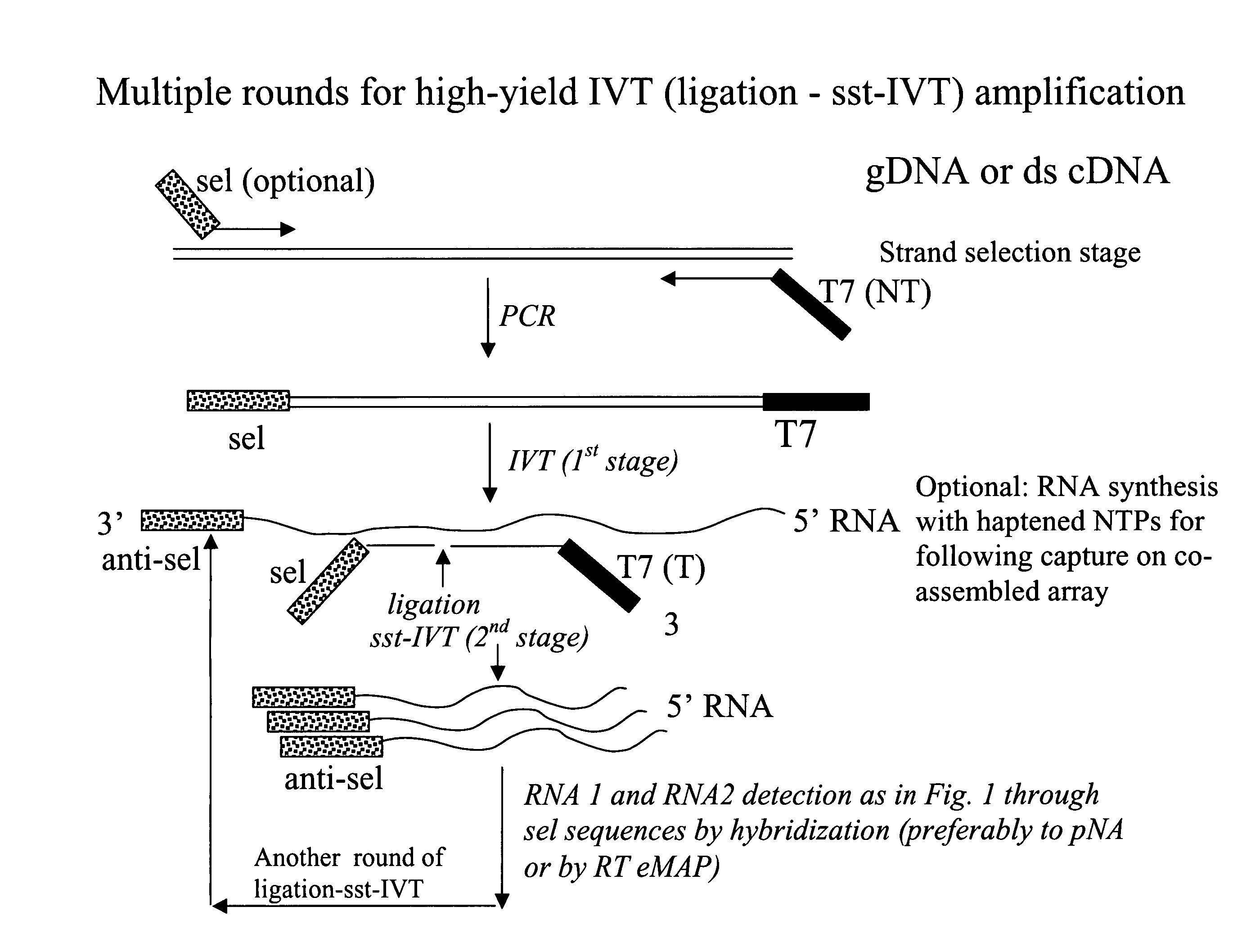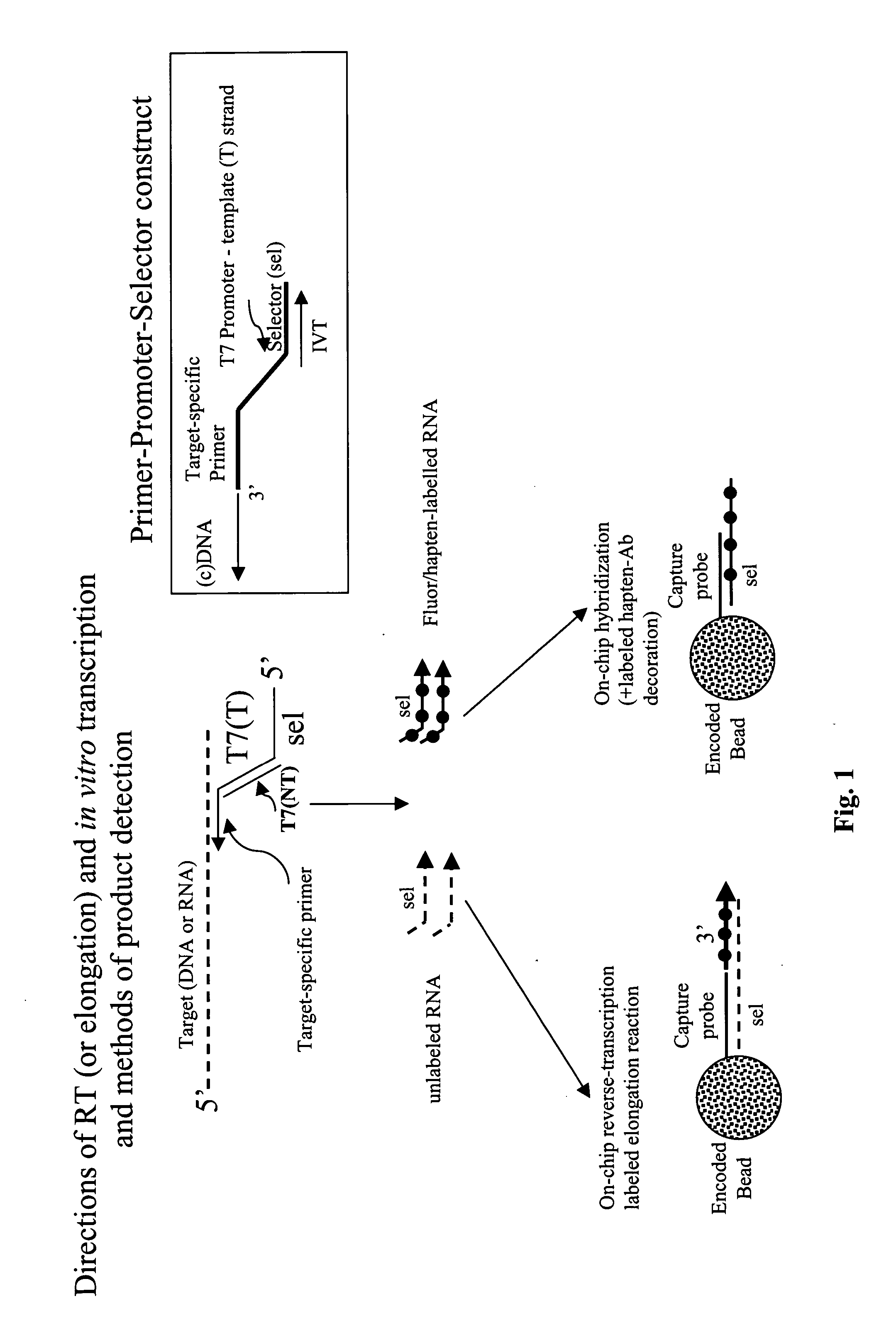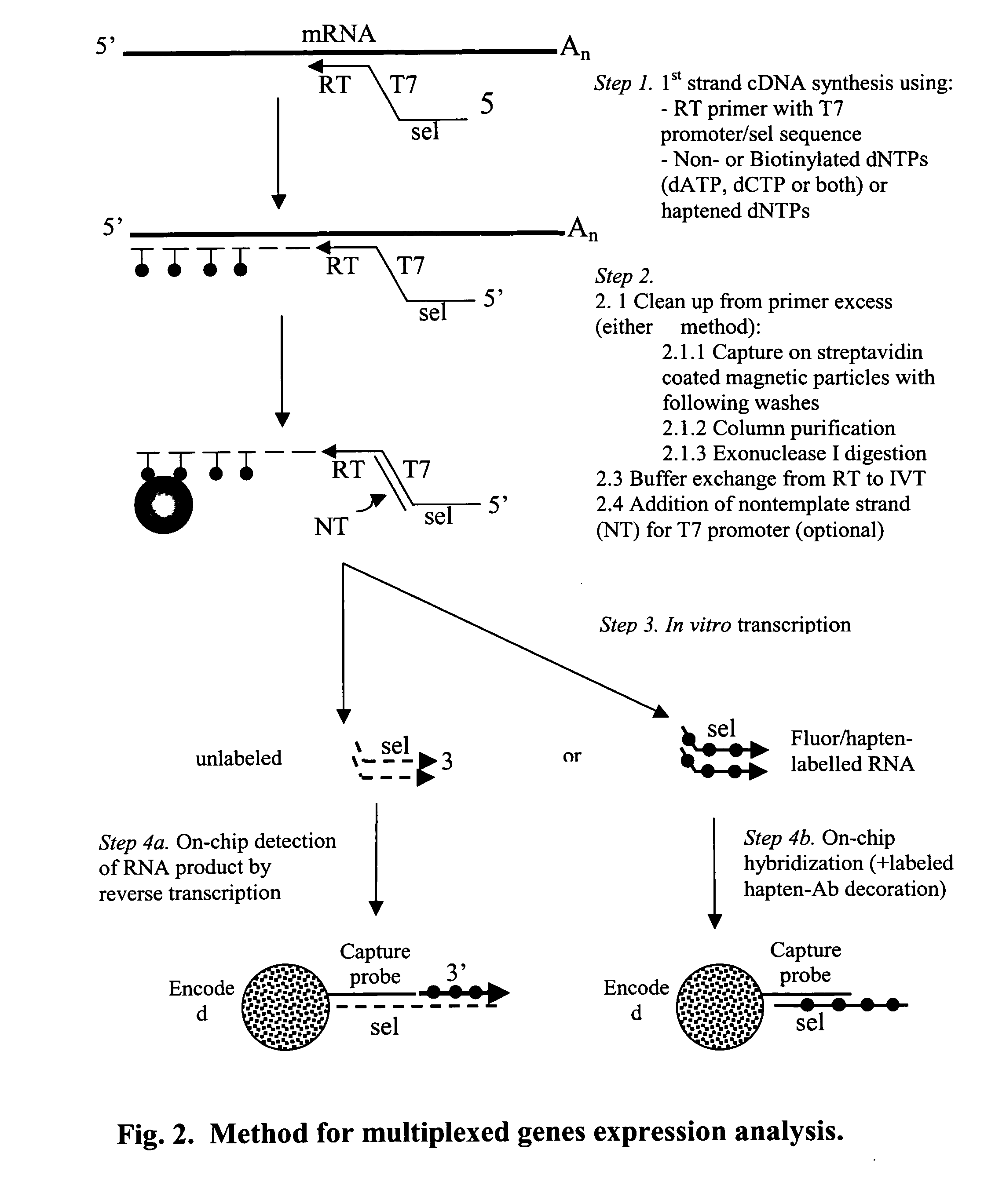Message abundance and allele copy number determination using IVT with single-stranded primer-promoter-selector constructs
a technology of promoter and promoter, which is applied in the field ofmessage abundance and allele copy number determination using ivt with single-stranded primerpromoter-selector constructs, can solve the problems of insufficient application of sst-ivt reaction to the development and realization of complex analytical protocols, limiting the sensitivity of assay protocols, and reaction adverse effects of in-vitro transcription, so as to facilitate the subsequent separation of extension products and improve the efficiency of sst-iv
- Summary
- Abstract
- Description
- Claims
- Application Information
AI Technical Summary
Benefits of technology
Problems solved by technology
Method used
Image
Examples
example i
Characterization of ssIVT Reaction: Dose Response and Time Course
[0143] Two different constructs, 64 and 62 nt in length, and respectively comprising RT priming sequences for IL-2R and IL-4I mRNAs, as well as the T7 promoter template strand, and a unique sel sequences, were used as a template for ss-IVT, with or without addition of the non-template strand of the T7-promoter. To elucidate the potential sensitivity of this approach, the concentrations of these primers were varied in the range of 100-0.1 fmol / 10 μl rxn. Obtained RNA (by MEGAshortscript™ T7 kit, Ambion, cat# 1354) during 2 h of incubation at 37° C. was used for on-chip reverse transcription, followed by detection of the resulting signal on encoded beads which were functionalized with capture sequences matching the IL-2R and IL-4I selectors (FIG. 5). The time course for IVT reaction for IL-2R ssDNA has been done in the same manner (FIG. 6) with incubation times of 2, 4, 6, and 18 hours at 37° C.
example ii
Assay Sensitivity Using Column Purification: Kanamycin mRNA
[0144] The first step in the assay is cDNA synthesis. The construct—RT primer consisting of RT / T7 / Sel sequences, 64 nt in length, was designed to generate cDNA of ˜500 nt in length. The reagents used were as follows:
Kanamycin mRNA—a positive control (Promega, Cat.# C1381)
Superscript™ III First-Strand Synthesis System (Invitrogen, Cat # 18080-051)
MEGAshortscript T7 kit (Ambion, Cat# 1354)
Cy3 labeled dCTP (Amersham, Cat# PA53021)
BAS BeadChip™ (BioArray Solutions, Ltd)
PCR purification kit (Qiagen, #28104)
All reactions were conducted in thermocycler.
[0145] To address the dose response the following dilutions of the mRNAs were prepared using RNase Out treated DEPC water (14 μl of 40 U / μl RNase out+266 μl of DEPC water): 1300, 100, 10, 1 to 0.1 fmol / ul.
[0146] cDNA synthesis was performed by assembling Mix1: 1 ul of 0.1 μM RT / T7 / Sel construct, 1 ul of RNA (different concentrations), 2 μl of 5×FS Buffer, 6 μl of DEP...
example iii
Purification
[0149] Experiments were performed to determine the range of optimal RT construct concentrations, by performing the reaction with different concentrations of construct using a combination of column purification and ExoI digestion. Specifically, the reaction mix was placed on a column (Qiagen, cat#28104), either with, or without prior ExoI treatment. Following column purification, 2 μl of eluate aliquot was used directly in the sst-IVT reaction, and the RNA products were detected by way of on-chip RT-mediated probe elongation (FIG. 8). Exo I treatment was performed in 10 μl of reaction mix consisting of 1 μl of construct (different concentrations), 1 ul of Exo I (New England Biolabs (NEB), Cat# M0293S), 2 μl of 5×FS buffer (see Example II) for 30 min at 370 C. followed by Exo I inactivation for 20 min at 80° C. FS buffer was used to reproduce the actual conditions of the Exo I treatment of the assay, though the optimal buffer conditions for digestion are provided by Exo I...
PUM
| Property | Measurement | Unit |
|---|---|---|
| Volume | aaaaa | aaaaa |
| Ratio | aaaaa | aaaaa |
| Elongation | aaaaa | aaaaa |
Abstract
Description
Claims
Application Information
 Login to View More
Login to View More - R&D
- Intellectual Property
- Life Sciences
- Materials
- Tech Scout
- Unparalleled Data Quality
- Higher Quality Content
- 60% Fewer Hallucinations
Browse by: Latest US Patents, China's latest patents, Technical Efficacy Thesaurus, Application Domain, Technology Topic, Popular Technical Reports.
© 2025 PatSnap. All rights reserved.Legal|Privacy policy|Modern Slavery Act Transparency Statement|Sitemap|About US| Contact US: help@patsnap.com



